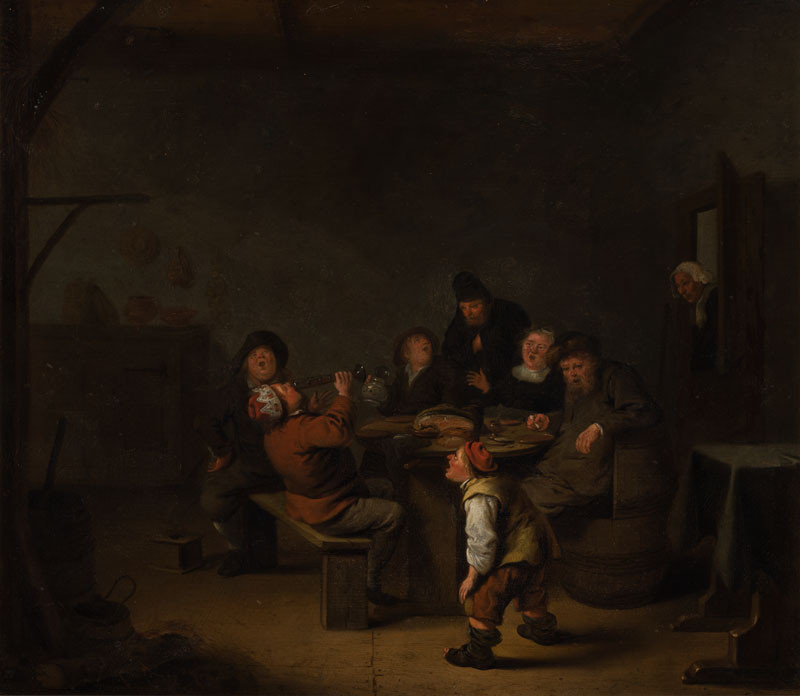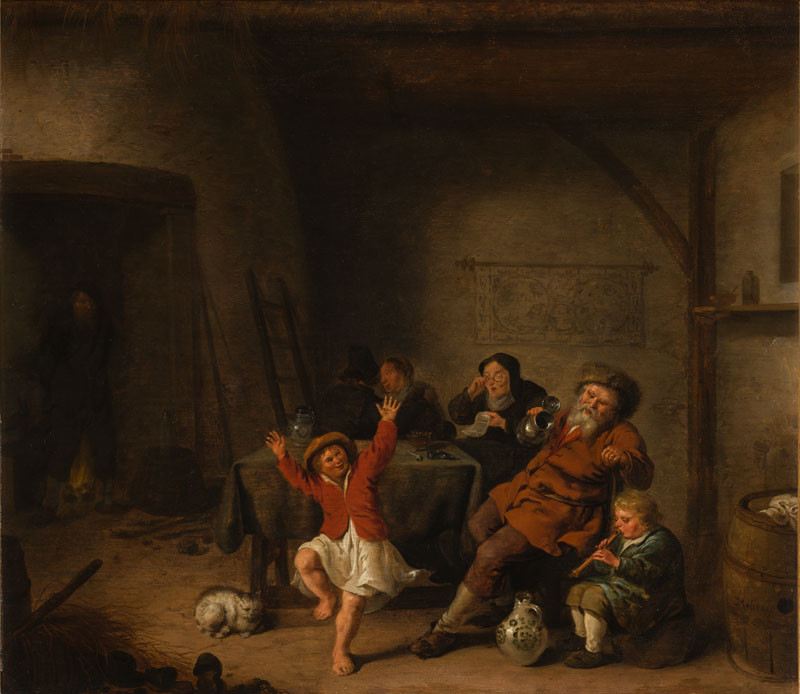
The picture represents the feast of the Epiphany, or Twelfth Night, that was celebrated in 17th century Netherlands on January 6, in the family circle. The feast has its origin in plays on Herod that were performed in the public by orators on this holiday. After Calvinism became a “public religion” in Holland, the Catholics who at the beginning of the century still formed a majority, would celebrate Epiphany mostly within the family circle. The celebration of the Three Wise Men is a parody of Herod, who, as the murderer of the innocents presented the utter villain. He was caricatured as the perpetually drunk king. Other court roles were arbitrarily added to the king of the evening, such as cook, musician, jester, etc. Paper crowns were cut out of specially printed lots, featuring pre-printed illustrations and verse, that were to be drawn. These can be seen also in another Molenaer picture on the subject of the Feast of the Epiphany. They are attached to the figures’ hats (Princely Collections, Liechtenstein Museum, Inv. No. 447). During the festivity, cakes, pies or breads with a bean baked in were handed around. Whoever found a bean in their cake was crowned the “Bean King”. With the paper crown on his head, the “Bean King” would open the feast with a mighty gulp of wine or beer, while the rest of the revelers called out, “The King drinks!” Drinking would remain the King’s major task during the festivity, and each time he drank the company had to lift up their cups. Those who forgot could be punished by the jester. Together, the company sung mocking songs on King Herod. Molenaer’s painting depicts the introductory toast of the King, while the company pays tribute to him by making much noise. The feast has not yet started. In Flemish painting, the theme received its best expression in the work of Jacob Jordaens. In Holland, Jan Steen became the master of the theme of The Twelfth Night Feast in the 1660s. Both artists placed the festivity in an upper class bourgeois context, which enabled them recourse to a great variety of color and richness of motif. In contrast to its pendant, in the Prague picture the festivity takes place in a rural setting; in terms of composition it is closer to the rural Twelfth Night festivities of David II Teniers (e.g. National Gallery of Art, Washington, of 1635). In the Nostic gallery, the picture was a pendant to As the Old Sing, So Pipe the Young. However, one finds differences in terms of quality in the execution of faces, which fully correspond with the repertory types of Jan Miens Molenaer. A 1986 X-ray photograph discovered a female portrait of inferior quality under the picture The King Drinks, which according to costume can be dated to a period shortly before 1650, which provides a terminus post quem for genre pictures. The King Drinks was thus probably painted on a used panel as a secondary pendant to the picture As the Old Sing? This would have probably occurred while still in Molenaer’s studio, or else the picture could have been painted by some of the artist’s followers.

